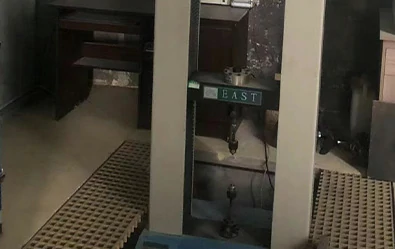loading...
- No. 9, Xingyuan South Street, Dongwaihuan Road, Zaoqiang County, Hengshui, Hebei, China
- admin@zjcomposites.com
- +86 15097380338
- Welcome to visit our website!
FRP Structural Profiles for Enhanced Performance in Engineering Applications
Understanding FRP Structural Profiles A Modern Approach to Construction
Fiber Reinforced Polymer (FRP) has emerged as a revolutionary material in the field of construction and structural engineering. With its exceptional properties, FRP structural profiles have garnered increasing attention for their diverse applications across various sectors. This article aims to provide a comprehensive overview of FRP structural profiles, highlighting their benefits, applications, and future prospects in the industry.
What are FRP Structural Profiles?
FRP structural profiles are composite materials made from a polymer matrix reinforced with fibers, such as glass, carbon, or aramid. These materials combine the high strength-to-weight ratios of fibers with the durability and flexibility of polymers. The result is a lightweight yet incredibly strong material that is resistant to corrosion, chemical degradation, and extreme environmental conditions. Various shapes and forms can be manufactured, including beams, columns, and plates, making FRP profiles well-suited for a wide range of structural applications.
Advantages of FRP Structural Profiles
1. Corrosion Resistance One of the standout benefits of FRP materials is their resistance to corrosion. Unlike traditional materials such as steel, which rust and degrade over time, FRP can withstand harsh environments, including marine settings and aggressive chemical exposure. This characteristic is particularly beneficial for infrastructures such as bridges, offshore platforms, and industrial plants.
2. Lightweight The low density of FRP profiles significantly reduces the overall weight of structures. This property not only eases transportation and handling but also minimizes the load on foundation systems, allowing for more innovative architectural designs. Structures can be erected swiftly, leading to reduced labor costs and shorter construction timelines.
3. High Strength and Durability FRP materials exhibit impressive tensile strength and stiffness, making them suitable for load-bearing applications. Their durability ensures that structures maintain their integrity over extended periods, reducing maintenance and replacement costs.
frp structural profiles

4. Thermal and Electrical Insulation FRP profiles provide excellent thermal and electrical insulation, making them an ideal choice for applications where temperature control and electrical safety are crucial.
5. Design Flexibility FRP can be molded into various shapes and sizes, offering architects and engineers remarkable design flexibility. This adaptability enables the creation of unique structures that can meet aesthetic and functional requirements.
Applications of FRP Structural Profiles
FRP structural profiles find applications in diverse sectors, including
- Construction Used in beams, columns, and reinforcements for buildings, FRP profiles help create lighter structures with enhanced load-bearing capabilities. - Transportation In the transportation sector, FRP materials are utilized in bridges, road signs, and noise barriers due to their durability and corrosion resistance. - Marine FRP is extensively used in boat hulls, docks, and piers because of its ability to withstand harsh marine conditions without rusting or deteriorating. - Energy Wind turbine blades made from FRP are lightweight, strong, and resistant to environmental wear, making them essential for renewable energy applications. - Industrial Chemical processing facilities employ FRP profiles for piping, ducts, and tanks where corrosion resistance is critical.
Future Prospects
The future of FRP structural profiles looks promising. As technology advances, manufacturers are developing improved production techniques and hybrid composites that combine the best properties of different materials. Research efforts are focused on enhancing the fire performance and recycling processes of FRP materials, which will broaden their applicability and sustainability.
In conclusion, FRP structural profiles represent a significant advancement in the construction industry. With their myriad benefits and applications, they offer solutions to many of the challenges faced by traditional building materials. As awareness of their advantages continues to grow, FRP profiles will likely play an increasingly vital role in shaping the future of construction and infrastructure development. The shift toward sustainable materials is not just a trend; it marks a fundamental transformation in how we design and build our surroundings, making FRP a key player in this evolution.
-
GRP Structures: The Future of Lightweight, High-Performance EngineeringNewsJun.20,2025
-
FRP Water Tank: High-Performance Storage for Corrosive and Clean Water SystemsNewsJun.20,2025
-
FRP Square Tube: The New Industry Standard for Chemical and Structural ApplicationsNewsJun.20,2025
-
FRP Pultruded Profiles: The Ultimate Choice for Lightweight Structural StrengthNewsJun.20,2025
-
FRP Handrails: The Safer, Smarter, and Stronger Choice for Modern InfrastructureNewsJun.20,2025
-
FRP Grating: The Smart Solution for Durable, Lightweight Industrial FlooringNewsJun.20,2025
-
Why Choose a Galvanized Water Tank for Your Storage NeedsNewsMay.21,2025
